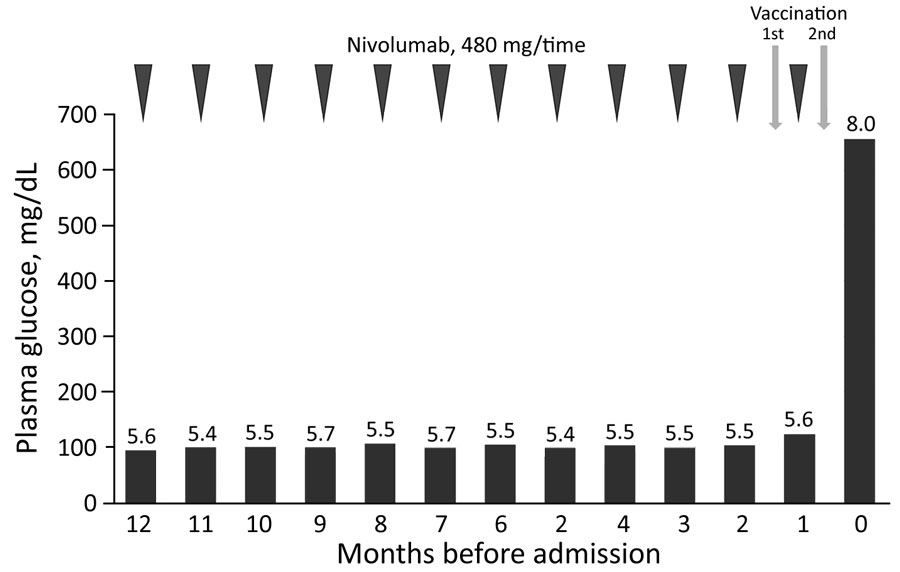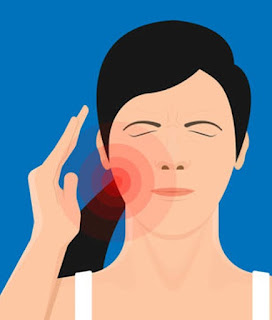Diabetes after SARS-CoV-2 Vaccination
A 43-year-old man who had malignant melanoma (pT3bN1bM0 stage IIIC) received nivolumab treatment (480 mg 1× every 4 wks) 12 months before admission. Fasting plasma glucose level was 94 mg/dL and glycated hemoglobin (HbA1c) 5.6% at treatment initiation. Plasma glucose and HbA1c were tested every 4 weeks. His range of plasma glucose was 90–123 mg/dL and that of HbA1c was 5.4%–5.7% (Figure). Positron emission tomography–computed tomography showed no metastasis or recurrence of the tumor 1 month before admission.
The man received his first SARS-CoV-2 vaccination 35 days before admission. No apparent adverse reactions occurred, except for local pain. The last nivolumab dose was administered 21 days before admission and the second SARS-CoV-2 vaccination 14 days before admission. The next day, he had a slight fever (temperature 37°C), which soon subsided. Thirst, polydipsia, and polyuria appeared 2 days after the second vaccination. He started drinking 3 L of water/day, and his weight decreased by 5 kg over the next 12 days.
Twelve days after the second vaccination, his blood glucose level was 655 mg/dL and his HbA1c 8.0%. Levels of ketone bodies increased; 3-hydroxybutyric acid was 2,813 μmol/L and acetoacetate 1,936 μmol/L. He was urgently admitted to the hospital because of a diagnosis of ICI-associated T1D and marked ketosis.
Laboratory tests at admission showed severely impaired insulin secretion capacity; fasting C-peptide immunoreactivity (CPR) was 0.33 ng/mL, 24-hour urinary CPR 5.74 μg/day and 3.82 μg/day, and ΔCPR during the glucagon load test was 0.03 ng/mL (Table). Tests results for islet-specific autoantibodies against glutamic acid decarboxylase, insulinoma-associated antigen 2, and zinc transporter 8 were negative. Human leukocyte antigen typing identified no specific alleles, including DR4, known to be related to T1D (Table). Blood glucose decreased in response to continuous intravenous administration of insulin and saline. On the second day of hospitalization, we switched from intravenous to subcutaneous injection of insulin. The patient’s blood glucose level was ultimately controlled by intensive insulin therapy (degludec 9 U before dinner and lispro 24 U before breakfast, 5 U before lunch, and 15 U before dinner). Five months after discharge, the patient still requires multiple daily insulin injections for glycemic control.REFERENCE
Sato T, Kodama S, Kaneko K, Imai J, Katagiri H. Type 1 diabetes mellitus associated with nivolumab after second SARS-CoV-2 vaccination, Japan. Emerg Infect Dis. 2022 Jul [date cited]. https://doi.org/10.3201/eid2807.220127
Original Publication Date: April 25, 2022




Comments
Post a Comment